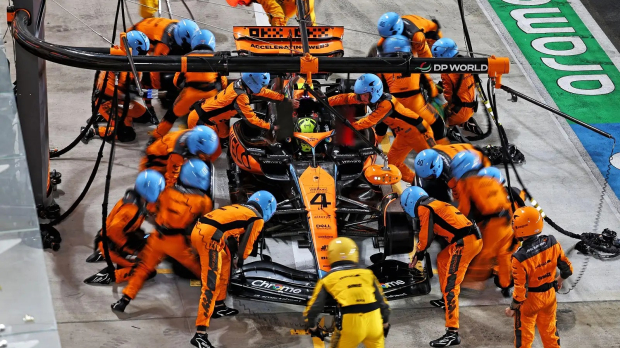F1 Explained: What is a pit stop and how does it work?
Pit stops play a crucial role in F1 and can make or break a driver’s race.
F1 is a sport that demands a great deal from everyone involved. It’s not just about racing; it’s a high-stakes game of strategy, precision, and teamwork.
And since it’s a sport where every single second counts, one of the most crucial aspects of an F1 race is the pit stop, as a swift stop can give a driver a massive advantage over rivals, while a slow one can throw a race into chaos.
In this article, we will take a closer look at how pit stops work in F1 and the role of each member of the pit crew.
What are pit stops?
An F1 pit stop is an incredibly fast process in which a highly trained crew of up to 20 mechanics swarms the car once the driver pulls into their designated pit boxes, performing a series of tasks in the blink of an eye.
The efficiency of the pit stop can be the deciding factor for a team’s victory, as race outcomes are often decided by mere fractions of a second.
To make sure that these pit stops are executed quickly and with accuracy, the crew undergoes rigorous training and thousands of practice sessions, working on their communication and coordination skills to minimise the time spent in the pit lane.
A single mistake or delay could cost a team the race, making the pit stop one of the most tense and exciting moments for both teams and fans alike.
How do pit stops work?
Before a driver enters the pit stop, the team must carefully plan their strategy while taking factors like tyre wear and track position into consideration.
Once they have decided on a strategy, the driver will hear the famous ‘box, box’ radio message, indicating that he has to enter the pit box, which is directly in front of the team’s garage.
Garage positions in the pit lane are assigned based on the team finish order in the constructors’ championship from the previous season. Normally, the team with the most points gets the garage closest to pit entry, while the second-place team is next, and so on.
When the driver arrives at the pit box, he has to put the car in the exact yellow and white spot marked on the ground to avoid slowing down the whole process.
During the pit stop, the mechanics perform a set of tasks to ensure the car is in optimal condition. They put on fresh tyres, repair damaged parts, and adjust the car’s aerodynamics if needed to maximise performance.
Once the mechanics pull the wheel guns off the wheels, the gantry light above the driver’s head turns green, signalling that the driver is good to go.
While drivers can pit as often as they want, they try to keep their visits to a minimum because each stop costs valuable racing time.
There is also no maximum time limit on how long a pit stop can last, but the pit crew will surely make every effort to complete the tasks as fast as possible to get the driver back on track – typically in 2.5 seconds or less.
Roles of pit stop crew

During a pit stop, there are 12…
Read More: F1 Explained: What is a pit stop and how does it work? 2024-01-19 14:57:00

